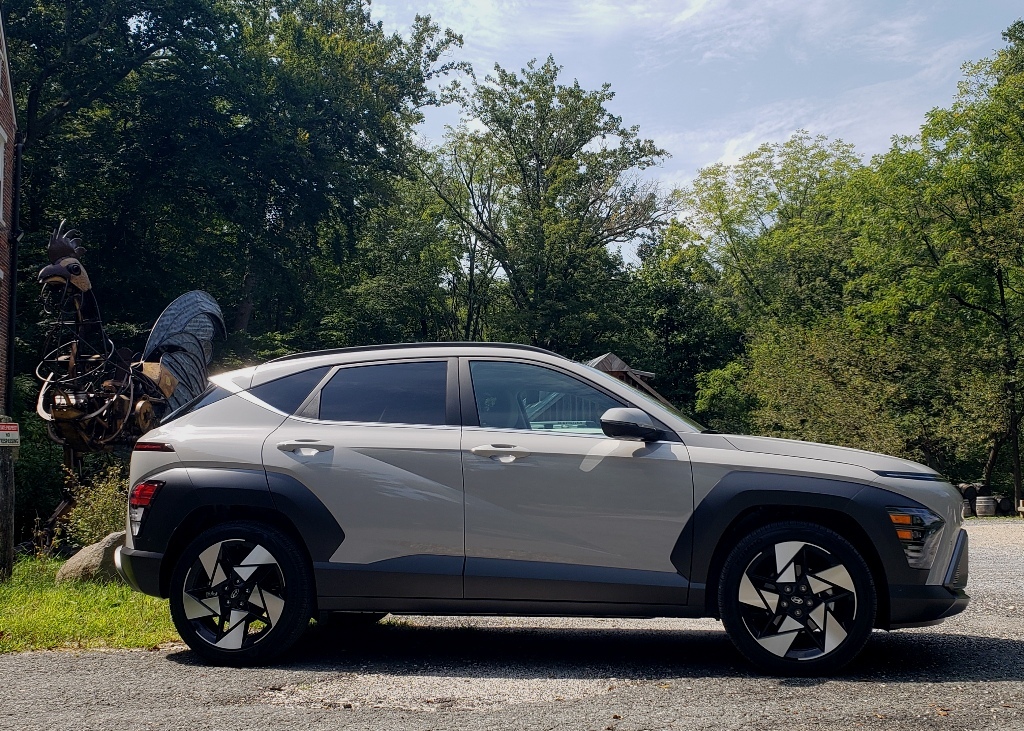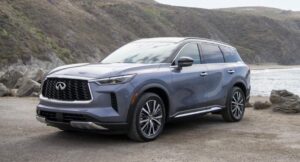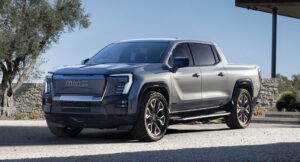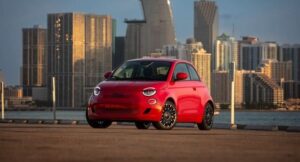Since 1729, Baltimore has been a port and shipping center. In addition to very significant and historical places within its city limits, it has been an industrial area since its beginning. The port opens to the Atlantic Ocean through the Chesapeake Bay. Today is also a significant automobile shipping point.
All this industrial activity and its proximity to Washington, D.C. makes for a busy commute in all directions over numerous county roads, bridges, and old cobblestone streets. The Hyundai Group picked this busy spot to introduce the all-new Hyundai Kona. This compact SUV offers connectivity, safety, and better overall performance than the American and Japanese makers in the automotive segment.
Today, about seventy percent of the auto sales are of some SUV type. These vehicles offer more interior space and have become the family-type car of preference. The Kona is the perfect size for most average American families (3.13 people), offering a larger second seat-row space and bigger trunk space than the previous model and its competitors.
With a total length of about fourteen feet, it is maneuverable around town and tight city spaces. The improvements are primarily within its interior space.
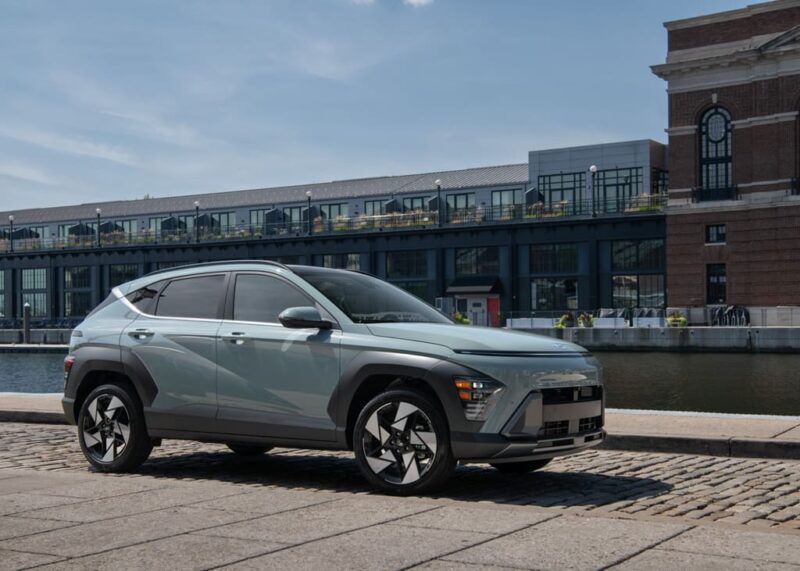
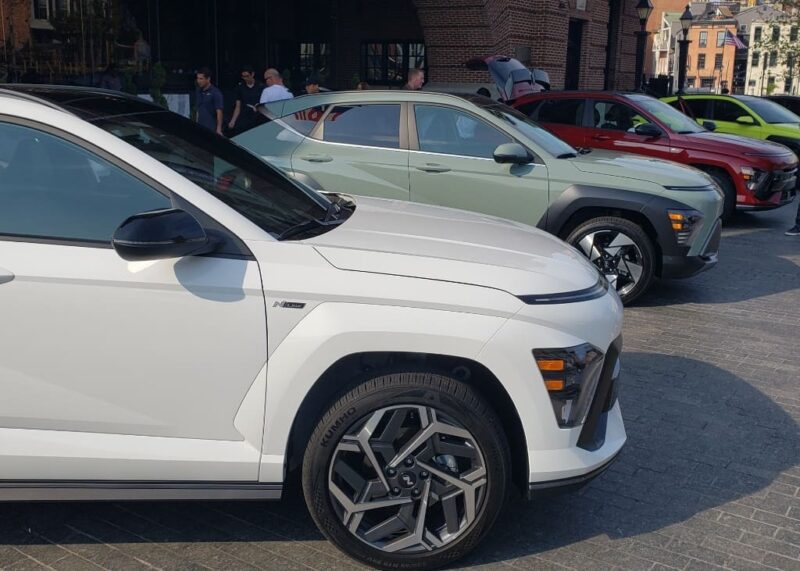
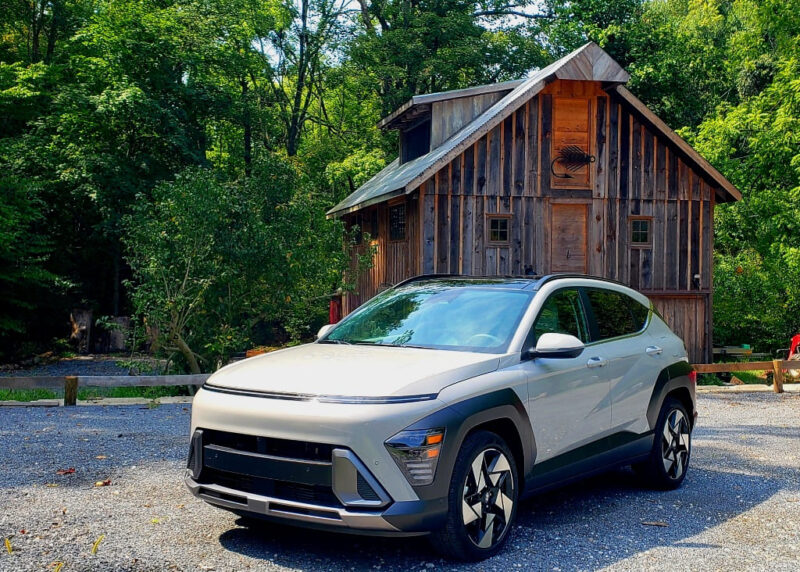


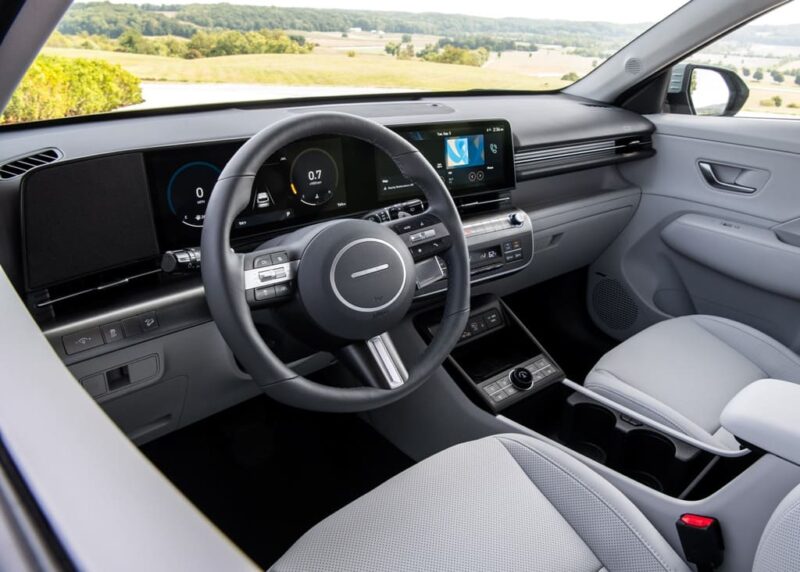
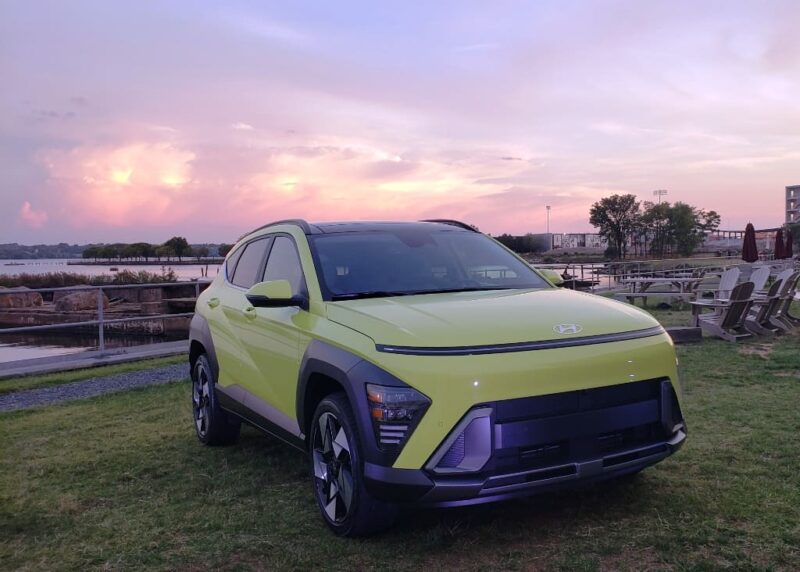

I had the chance to ask the lead designer, Kevin Keng, about the goals set for the new look and their target customer. I learned that the California design team was instrumental in creating an expressive exterior that retains the parametric “Z” (a line that you can see forming between the front wheel arch and the rear of the car) and incorporates a “pixel” language that it’s a feature in the electric Hyundai IONIQ 5. A row of small squares along the front and rear of the car suggests the pixels that create the images in our computers. I like the sleek new front fascia that minimizes the front grille space and gives the vehicle a clean look. Since the Kona is available with a combustion or electric motor, the “pixel touch” tells us about the transition to new technology on wheels.
This Hyundai Kona is best appreciated for its interior ambiance. The open space and light-colored interior create an atmosphere of tranquility. The shifter has moved behind the steering wheel, and the center console sits further down, removing the busyness to the eyes. Additional touch knobs support the double 12″ digital screens to get access to most infotainment functions. I appreciate this because the touch-screen-only version found on other cars requires you to take your eyes off the road. Nothing is better than a finger sensing a nearby switch to get what you need on the digital screen. The general interior layout is quite simple but well done. The rear seat has an almost all-across flat surface reminiscent of a modern sofa. The trunk space is a few inches larger for more capacity. The engineers stretched the distance between the front and rear car axles to increase interior space. The designer mentioned having more “human space,” and they achieved that.
This Kona is available with multiple power trains to appeal to consumer needs. There is an EV (Electric Vehicle) and two gasoline engine options. A hybrid version is currently available in Europe, so it should make its way to the United States soon. The EV uses the 400DC quick charge architecture, similar to the IONIQ 5 & 6, with an 11 KWhr on-board charger. You can select a 48KW / 133 HP version capable of 200 miles of range or go with the extended range model (261 miles) that uses a more robust 64 KWhr motor. If an all-electric car is not for you, Kona offers a 2.0L four-cylinder gasoline motor powered by a CVT single-gear transmission. I enjoy this version the most as it is quiet and smooth at any speed. Hyundai has a 1.6 Turbo four-cylinder motor with almost two hundred horsepower (190 HP) for more power. This engine connects with an eight-speed transmission, and it’s a bit quicker to react to a full-throttle demand. Since this is no sportscar but a family or commuting vehicle, I suggest the bigger 2.0 L motor for better overall performance.
I had the opportunity to drive all three versions on Baltimore streets. My opinion of the gasoline version is that on the road, you immediately notice that this is quieter than the previous generation and its competitors. The reasons are the hydro-filled engine mounts, the new padding under the floor of the car, and the new Kumho tires that incorporate a foam pad inside the tire itself. The steering, which is electronically controlled, is very responsive, and it is hard to believe that there are so many components to make it work. I noticed that the 1.6L turbo version keeps the transmission working hard, searching for the right gear to offer more power push. There are 2WD (Wheel Drive) and All-WD. Depending on the weather where you live, the All-WD is a better option for rain or snowy conditions.
The EV, as I expected, feels the more powerful of the three versions, but only because of the instant power delivery from the electric motor. Like the previous generation, this EV exceeds the demands needed for daily commuting. If you can quickly and easily charge a car at home or work, the Kona electric is what all EV cars should be—a compact family car with a minimal emission footprint and affordability.
The vehicle incorporates the Hyundai Smart Sense driving assistance system with many features to help mitigate a collision. An entire surrounding monitoring system comprised of sensors and cameras makes it almost impossible not to see what is around you at low speeds. The Kona can also park itself in tight spots.
Regarding connectivity, the system has more memory to handle a higher data flow. It can also update its software automatically to ensure that every car has the latest or revised updates for all systems to work seamlessly. I tried the Apple Car-Play and Android Auto, and it worked without hiccups once I understood the process. I like the real-time Goggle maps view that helps you visualize your surroundings. Between the apps and options, you can see that it has everything for you to continue doing whatever you do on your phone while you safely drive.
The trim options are SE, SEL, N-Line, and Limited. The N-line offers premium interior, exclusive wheels, and exterior panels that change its presence. From $24,000 to $31,650, the SEL with the convenience package is the one I recommend. At around $27,000, you get all you need to take your family safely and in style around town.
Versión español
Desde 1729, Baltimore ha sido un puerto y centro marítimo. Además de lugares muy significativos e históricos dentro de sus límites urbanos, ha sido desde sus inicios una zona industrial. El puerto se abre al Océano Atlántico a través de la Bahía de Chesapeake. Hoy en día también es un importante punto de embarque y envío de automóviles.
Toda esta actividad industrial y su proximidad a Washington, D.C. hace que los desplazamientos diarios en todas direcciones a través de numerosas carreteras del condado, puentes y antiguas calles adoquinadas sean muy grandes. El grupo Hyundai eligió este concurrido lugar para presentar el nuevo Hyundai Kona. Este SUV compacto ofrece conectividad, seguridad y un mejor desempeño general que los fabricantes estadounidenses y japoneses dentro de ese segmento automotriz.
Hoy en día, alrededor del setenta por ciento de las ventas de automóviles son de algún tipo de SUV. Estos vehículos ofrecen más espacio interior y se han convertido en el coche de tipo familiar preferido. El Kona tiene el tamaño perfecto para la mayoría de las familias estadounidenses promedio (3,13 personas), y ofrece una segunda fila de asientos más grande y un mayor espacio en el maletero que el modelo anterior y todos sus competidores.
Con una longitud total de unos catorce pies, es maniobrable en la ciudad y en espacios reducidos de las urbes modernas. Las mejoras se encuentran principalmente en su espacio interior.
Tuve la oportunidad de preguntarle al diseñador , Kevin Keng, sobre los objetivos establecidos para la nueva apariencia exterior y como atraer a un cliente objetivo. Me enteré de que el equipo de diseño de California jugó un papel decisivo en la creación de un exterior expresivo que conserva la “Z” paramétrica (una línea que se puede ver formándose entre el arco de la rueda delantera y la parte trasera del auto) e incorpora un lenguaje de “píxeles” que es una característica del Hyundai IONIQ 5 eléctrico. Una fila de pequeños cuadrados a lo largo de la parte delantera y trasera del automóvil sugiere los píxeles que crean las imágenes en nuestras computadoras. Me gusta la nueva y elegante fascia delantera que minimiza el espacio de la parrilla delantera y le da al vehículo una apariencia limpia. Dado que el Kona está disponible con motor de combustión o eléctrico, el “pixel touch” nos habla de la transición a la nueva tecnología sobre ruedas.
Este Kona está disponible con múltiples trenes de potencia para satisfacer las necesidades de los consumidores. Hay un EV (vehículo eléctrico) y dos opciones de motor de gasolina. Actualmente hay una versión híbrida disponible en Europa, por lo que pronto llegará a Estados Unidos. El vehículo eléctrico utiliza la arquitectura de carga rápida 400DC, similar a la del IONIQ 5 y 6, con un cargador integrado de 11 KWh. Se puede seleccionar una versión de 48 KW / 133 HP con capacidad de 200 millas de alcance o optar por el modelo de alcance extendido (261 millas) que utiliza un motor más robusto de 64 KWh. Si un automóvil totalmente eléctrico no es para usted, Kona ofrece un motor de gasolina de cuatro cilindros y 2.0 L impulsado por una transmisión CVT de una sola marcha. Disfrute más esta versión porque es silenciosa y suave a cualquier velocidad. Hyundai también tiene un motor 1.6 Turbo de cuatro cilindros con casi doscientos caballos (190 CV) para más potencia. Este motor se conecta con una transmisión de ocho velocidades y es un poco más rápido para reaccionar ante una demanda de aceleración máxima. Dado que no se trata de un automóvil deportivo sino de un vehículo familiar o de transporte diario, sugiero el motor más grande de 2,0 L para un mejor rendimiento general.
Tuve la oportunidad de conducir las tres versiones en las calles de Baltimore. Mi opinión sobre la versión de gasolina es que en la carretera se nota inmediatamente que es más silenciosa que la generación anterior. Las razones son los soportes del motor con fluido interno, el nuevo acolchado debajo del piso del automóvil y los nuevos neumáticos Kumho que incorporan una esponja dentro del propio neumático. La dirección, controlada electrónicamente, responde muy bien y cuesta creer que haya tantos componentes para que funcione. Noté que la versión turbo de 1.6L mantiene la transmisión trabajando duro, buscando la marcha adecuada para ofrecer más potencia. Hay 2WD (tracción a las ruedas) y All-WD. Dependiendo del clima del lugar donde viva, el All-WD es una mejor opción para condiciones de lluvia o nieve.
El EV, como me lo esperaba, se siente más el potente de las tres versiones, pero sólo por la entrega instantánea de potencia del motor eléctrico. Al igual que la generación anterior, este vehículo eléctrico supera las exigencias necesarias para los desplazamientos diarios. Si se tiene acceso a cargar electrica rápida en casa o en el trabajo, el Kona eléctrico es lo que todos los vehículos eléctricos deberían ser: un automóvil familiar compacto con una huella de emisiones mínima y asequibilidad.
Todos los modelos Kona incorporan el sistema de asistencia a la conducción Hyundai Smart Sense con muchas funciones para ayudar a mitigar una colisión. Un completo sistema de vigilancia del entorno compuesto por sensores y cámaras hace que sea casi imposible no ver lo que hay a su alrededor a bajas velocidades. El Kona también puede estacionarse por si solo en espacios reducidos.
En cuanto a la conectividad, el sistema cuenta con más memoria para manejar un mayor flujo de datos. También puede actualizar su software automáticamente para garantizar que cada automóvil tenga las actualizaciones más recientes para que todos los sistemas funcionen sin problemas. Probé Apple Car-Play y Android Auto y funcionó sin problemas una vez que entendí el proceso. Me gusta la vista de mapas de Goggle en tiempo real que ayuda a visualizar tus alrededores. Entre las aplicaciones y opciones, se puede ver que tiene todo para que uno siga haciendo lo que hace en su teléfono mientras conducs de forma segura.
Las opciones de equipamiento son SE, SEL, N-Line y Limited. La línea N ofrece un interior premium, rines exclusivos y paneles exteriores que cambian su presencia. Los precios van entre $24,000 a $31,650. El SEL con el paquete de conveniencia es el que recomiendo. Por alrededor de $27,000, obtienes todo lo que necesitas para llevar a tu familia de forma segura y con estilo por la ciudad.

